Everything has its time but there are crafts, skills and techniques that go beyond the boundaries of history and stay with us for a long time. Among these, there is without a doubt the technique of inlaying.
Inlaying is the process a craftsman uses to decorate a flat surface by inserting different materials into the base material. The story I’ll tell you now is very old but it continues right up until our present days now.
The first evidence of the art of setting is seen during the Egyptian era (the period up to 3900 BC). In fact, numerous wooden casks, inlaid with ivory were found inside Egyptian tombs. In Asia Minor, inlays were found around 350 BC, characterized and recognized by the use of stone and mother of pearl.
Over the centuries, this antique art travels and finally arrives in Europe, mainly in Italy and particularly in Tuscany. On the Italian peninsula, during the period of the Roman Empire, this technique took the name of tarsia or intarsia (setting or inlaying). Historically it was already 300 AD.
Initially we can talk about Carthusian marquetry, as its origin can be traced back to the Carthusian monks who made various inlaid artifacts. With time, the craftsmen of the art of inlaying began to perfect their techniques, invent new techniques and increased the technical difficulty and visual veracity to the works they created. The Sienese marquetry, in particular obtained a monopoly over the commission of works in this field, for over 100 years.
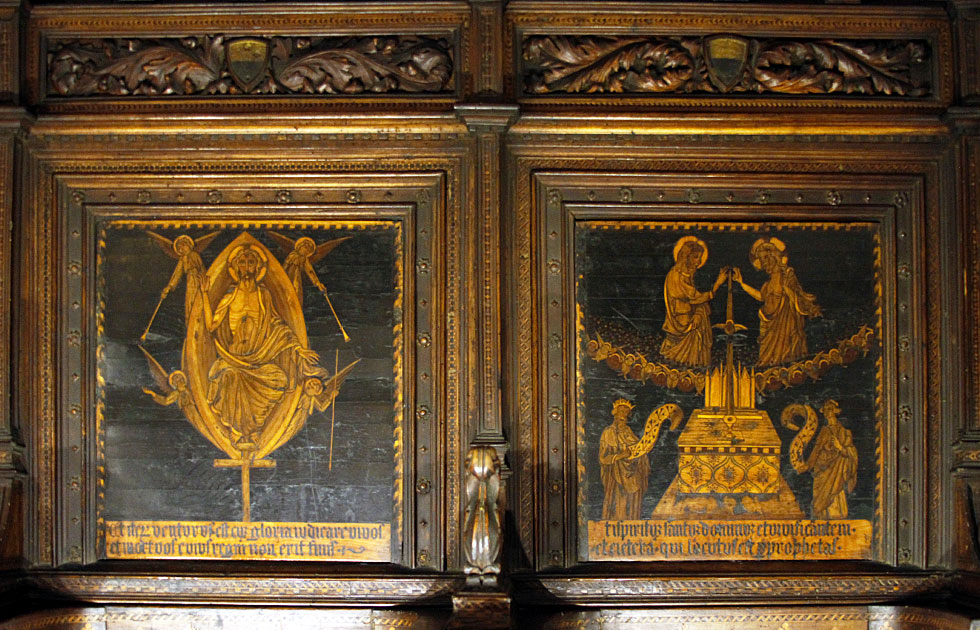
During the 1400s, especially in Tuscany, the inlays were enriched with games of perspective and shadows, so much so that they almost became real ‘paintings’. Starting from 1500s, creativity was such as presenting repeating geometric patterns along the same lines as modern patterns.
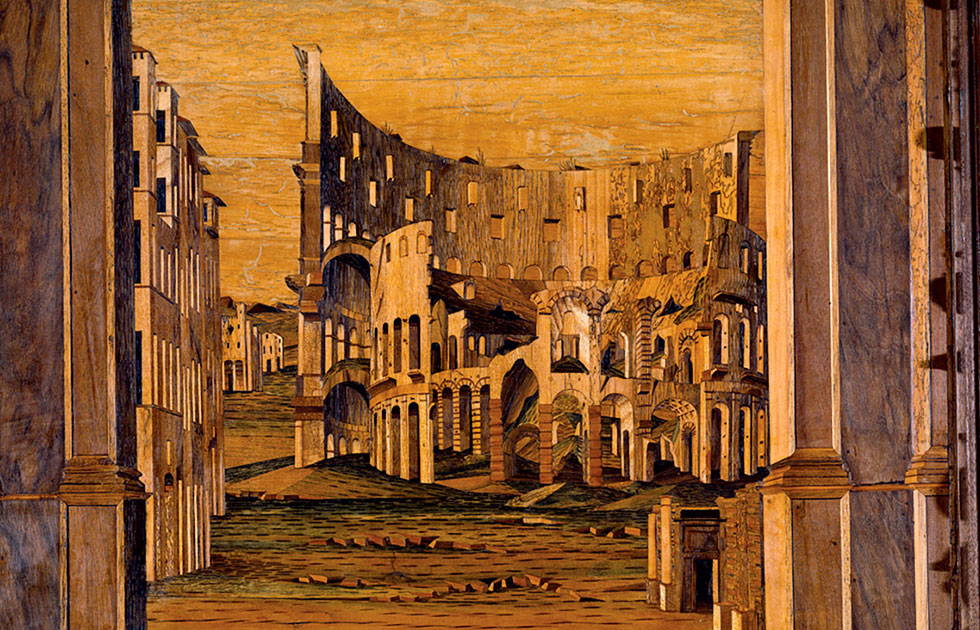
An interesting thought: the term inlay (intarsio) comes from the Arabic word tarsi, and the significance is to connect. Today, centuries after its diffusion, inlays are connected to Tuscany, to my Siena and inevitable to this blog. The skillful art of inlaying interpreted in a modern way is in fact the theme that I want to concentrate on today, to introduce and tell you about a very special wall clock that was recently given to me by ArosioMilano.
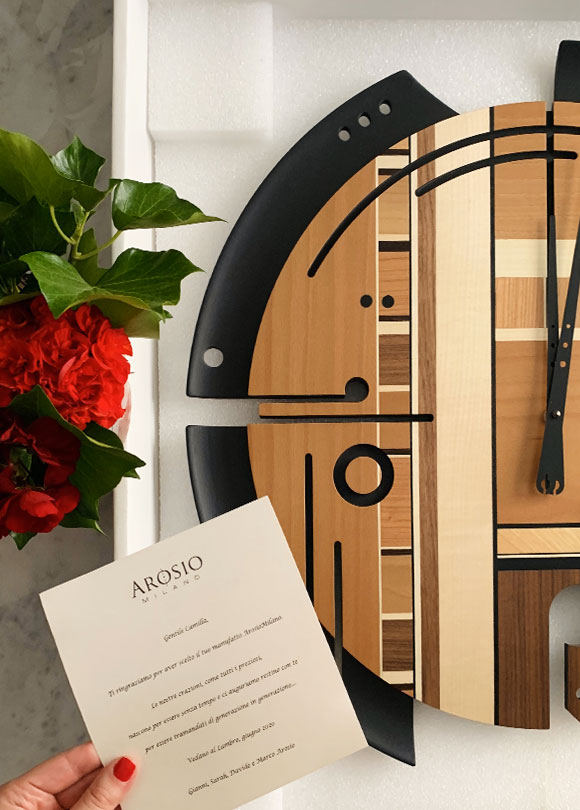
ArosioMilano is an all-Italian company, in perfect synthesis with the concepts of craftsmanship and know-how, which was acquired from experience with MidArte, a furniture company already in its fourth generation.The ArosioMilano family today comprises of the creative genius of the father Gianni, together with the tenacity of his daughter Sarah and his sons Davide and Marco. This multi talented family has been able to interpret the ancient inlay technique in a modern way, applying it to make these wall clocks.
A few days ago, the SAMADA CONTRAST wall clock was delivered to my home, a jewel of inlaid wood made by the Arosio family. This wall clock is an object with a contemporary line that combines precious woods, such as beech, maple and walnut and Italian walnut within the inlay. It has an opaque finish and the internal structure is of wood pulp. It’s large with a diameter of 60 cm – perfect for highlighting its details. To allow you to appreciate the precision of the inlay, see for yourselves.
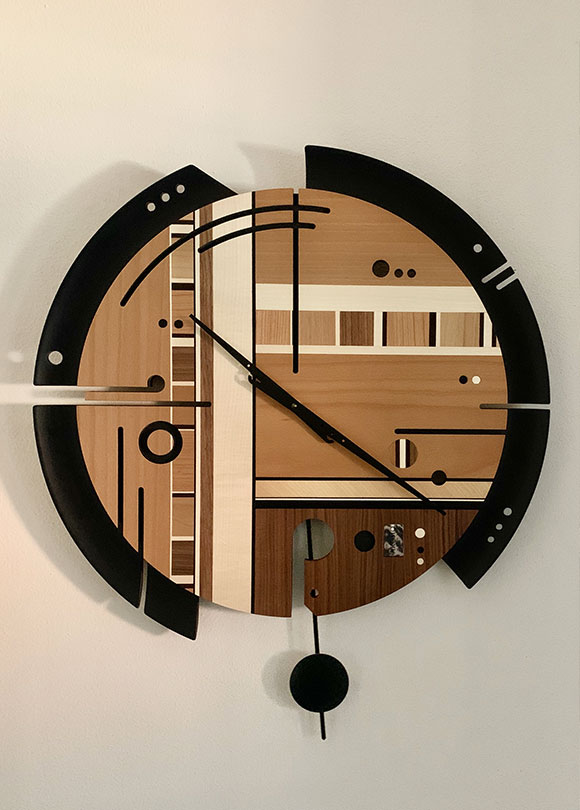
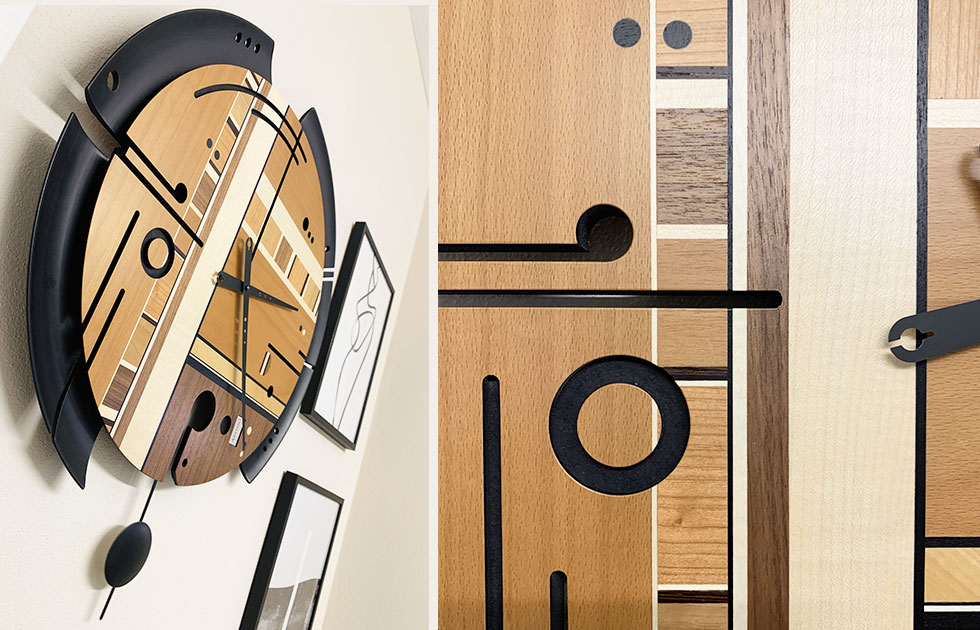
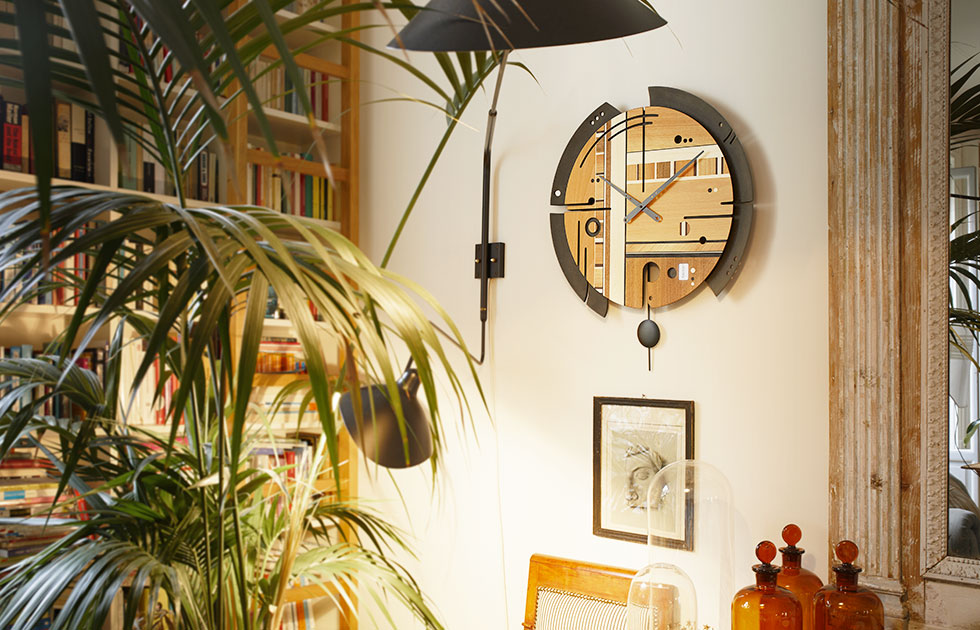
The collection to which this clock belongs is called SAMADA and it is embedded within this name that you can find the DNA, history and love of the Arosio family. In fact, Gianni put together the first two letters of his sons to create this name (Sarah, Marco and Davide) and this gave life to the name SAMADA.
In my opinion, SAMADA CONTRAST is a product that best suits all the different types of furniture in our homes. I think that in the collection offered by ArosioMilano, this wall clock is the most versatile. It fits perfectly into modern and more traditional contexts, especially if the tones of colour are neutral and warm. For houses characterized by cooler shades, the TECH version or the SILVER special version, also from the SAMADA collection, are perfect.
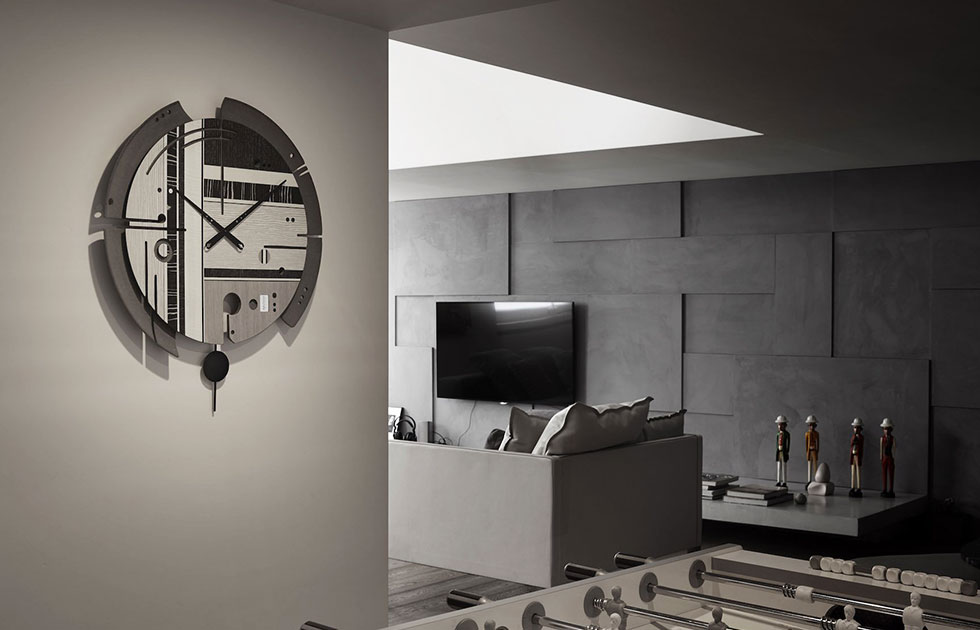
For me, the choice of the wall clock was a bit difficult to make. Both the GOLD special edition and the NATURAL model really tempted me. The advice I give to you is to sit comfortably and look at all the versions of the wall clocks offered by ArosioMilano. You can find all the collections currently in production here. It’s incredible how much Made in Italy and expert Italian craftsmanship has passed down technical and manufacturing expertise over the years. The Arosio family with ArosioMilano are the perfect demonstration of this.
ARTICLE IN COLLABORATION WITH ArosioMilano




6 Comments
Salve buonasera sono un amante dell’artigianato,tutto ciò. Che riguarda il legno mi affascina l’orologio ha veramente attirato la mia attenzione….è stupendo buonaserata
Ciao Romolo, sono davvero contenta. Ci tengo sempre a parlare di alto artigianato e di realtà aziendali che fanno del loro lavoro una vera e propria arte.
I agree with you for your opinion that SAMADA CONTRAST is a product that best suits all the different types of furniture in our homes? Your article is great ?
Hello Ahmed, I’m so glad that you like my article. Hope you can find other interesting articles by reading my blog 🙂 And regarding SAMADA CONTRAST, I want to say one more time: it’s an absolute masterpiece!
Hi Camilla!
Would love to write in Italian…but…
You also find nice portuguese inlay works, unfortunately more old works than new ones. So beautiful this click..a masterpiece.
Grazie mille
Te voglio bene ❤️
Hello Quim, you can speak with me in the language that you prefer, no problem 🙂 thanks a lot for your comment. You’re right, this wall clock is simply amazing!